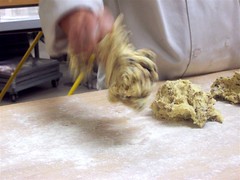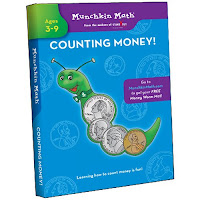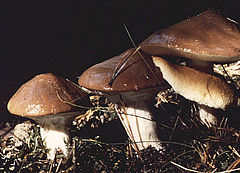Women Geared Scholarship Empowers & Puts Pro Camera Gear Into Your Hands 36
. food blog promotion, food bloggers, Food Porn, mentorship, photography, photography business, scholarships, women in businessFor most food bloggers, showcasing their food images is a thing of pride and mostly of beauty. People have a love affair with food and photography.

 I like polished shots (my pic on upper left), but I think I get a real kick out of food in action - such as motion blurs from the act of creating scones (my pic on bottom left), or a mixer in a hardcore whirling motion.
I like polished shots (my pic on upper left), but I think I get a real kick out of food in action - such as motion blurs from the act of creating scones (my pic on bottom left), or a mixer in a hardcore whirling motion.
The act of creating food, sparks my interest maybe more that tasting it. I love to see the way that true culinarians immerse themselves in their work - it is something very magical, echoed in the expressions and precise movements of their hands and in their body movements.
I acquaint it to a dance. Working in close quarters among a crew in a commercial kitchen or bake shop, it takes the best choreography, to make time most efficient and productive.
But when you are able to capture those flashes of creativity and of proficient knowledge, the outcome of your photos become all that more interesting.

 I like polished shots (my pic on upper left), but I think I get a real kick out of food in action - such as motion blurs from the act of creating scones (my pic on bottom left), or a mixer in a hardcore whirling motion.
I like polished shots (my pic on upper left), but I think I get a real kick out of food in action - such as motion blurs from the act of creating scones (my pic on bottom left), or a mixer in a hardcore whirling motion.The act of creating food, sparks my interest maybe more that tasting it. I love to see the way that true culinarians immerse themselves in their work - it is something very magical, echoed in the expressions and precise movements of their hands and in their body movements.
I acquaint it to a dance. Working in close quarters among a crew in a commercial kitchen or bake shop, it takes the best choreography, to make time most efficient and productive.
But when you are able to capture those flashes of creativity and of proficient knowledge, the outcome of your photos become all that more interesting.
If you are a woman aged 21 yrs or older (regardless of your foodie status) , living in the US, and have ever dreamed of taking your blog or picture taking abilities to the next level - the SOAR! Scholarship from ME KA ROH Photography can do just that.
The three SOAR! recipients will be given thousands of dollars of camera gear, services and mentoring. But throughout the next twelve months, they will also be given something you can’t quantify. They will be given the gift of guided challenge—challenge to CLIMB heights they have never imagined. They will gain strength which will lead to empowerment. When they have made the leaps of risking over and over again, our goal is that they will be empowered to catch the wind. And we will not only witness them take flight, but we will see them SOAR!
Imagine being a winner and having not only pro photography gear put in your hands, but tons of professional software (like photoshop CS4), pro classes and training, mentoring and your own PR - see the whole list of prizes.
For me this would be a dream come true, I would love to delve into professional photography, and have all the expensive tools and be empowered to use them.
For me this would be a dream come true, I would love to delve into professional photography, and have all the expensive tools and be empowered to use them.
There will be 3 grand prize winners chosen on January 1st, 2010. The winners will have an intensive 12 month schedule aimed at sculpting them into photography business pros.
All you need to apply is fill out the application, then submit a 2 minute video on "why you are worthy of receiving the SOAR Scholarship"


























